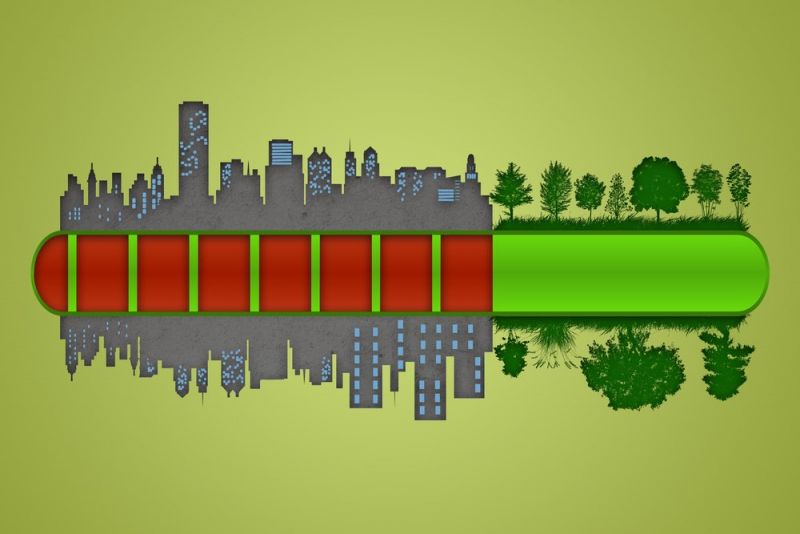Are Cities on Track to Achieve the SDGs by 2030?
Published on by Water Network Research, Official research team of The Water Network in Academic
Most are doing well on a few targets, but worrying gaps are emerging. And some cities are in danger of backsliding.
By Paula Lucci

PsychoShadow/Shutterstock
We are now almost halfway through the first 1,000 days of implementation of the landmark Sustainable Development Goals (SDGs), the global framework that seeks to eradicate poverty, combat climate change, and promote peaceful and inclusive societies — all by 2030.
In countries around the world, we’ve started to see burgeoning progress on implementation at the national and, to a lesser extent, local levels. But it has become increasingly clear that real action needs to be stepped up if we are going to set the solid foundations needed to meet these ambitious goals by the end of the next decade.
At Overseas Development Institute in London, we made a first attempt to answer these questions by running a series of projections for eight selected SDG targets for 20 cities in the developing world. These eight targets were: child mortality, nutrition, secondary education, employment (disaggregated by female/male employment), access to energy, access to water, access to sanitation and access to housing (using both quality of flooring and overcrowding as indicators).
The 20 cities all had Demographic and Health Survey data representative at the city level. Of these, 14 were in Africa, four were in Asia, and two were in Latin America and the Caribbean.
Here is what we found.
The good
First, the good news. On current trends, by 2030 most cities in our study would be halfway or more to achieving at least four of the eight targets we selected. These include: child mortality, universal access to secondary education, universal access to energy, and full and productive employment (for male employment only; it’s a different story for female employment, as discussed below), and access to adequate housing based on quality of flooring. With continued efforts, these targets could be achieved.
The bad
At the same time, the majority of cities in our sample also will require rates of progress more than twice as fast as we’ve seen in the past if they are to meet the other half of the selected targets by 2030. Here the concerns are around aspirations to end child malnutrition, to achieve universal access to drinking water, adequate sanitation, full and productive employment for females, and access to adequate housing (based on overcrowding statistics). Only revamped endeavours and prioritization of policy in these areas could help to adequately accelerate progress for these targets.
The ugly
More worryingly, a minority of African cities in our sample fall under what we called the “reversal” category. This means that cities need to change the direction of current trends if the targets stand a chance of being achieved. Six of these cities — Brazzaville, Ouagadougou, Bamako, Conakry, Nairobi and Maputo — require reversals of trends for the housing target. Harare and Abidjan require reversals for the target on ending child malnutrition, while Nairobi falls under this category for the water target.
Capacity — and data, data, data
So, what needs to happen next? From this first analysis, we extracted two broad lessons.
1. Strengthen local government’s capacities
It has been said many times, but it can’t be stressed enough: If cities are going to meet the SDGs, central governments and donors will need to work to strengthen local governments’ capacities. In many developing countries with growing urban populations, particularly in Africa, local governments’ limited capacities and lack of resources remain huge challenges. Unless this changes, these city officials will be unable to deliver basic services for their growing populations — as the results of our projections show.
In this case, strengthening capacity means training and attracting qualified local officials. It also means that central governments need to devolve the powers and finance required for local governments to deliver on the SDGs. And donors need to get better at supporting rapidly growing cities in the developing world.
2. Improve the data available
While running these projections, we came up against several data limitations that constrained the targets we could monitor. It is clear that good data is the only way for governments to inform policies and for citizens to hold them to account. It may seem too technical, but without facts, particularly at a time when they are politically so contested, it is nearly impossible to inform the long-term planning we need to make our cities more inclusive and sustainable.
Here are four key actions that can be taken to improve the data available to local authorities and to inform policymaking around sustainable urban development. Some of these prescriptions are fairly straightforward and can be slotted into pre-existing statistical structures, while others will need more time and money to be realized. Either way, doing so is a worthy investment.
Read full blog: Citiscope
Media
Taxonomy
- Policy
- Resource Management
- Integrated Urban Water Management
- Integrated Water Management
- Energy Efficiency
- Integrated Infrastructure
- Eco-City Development
- City